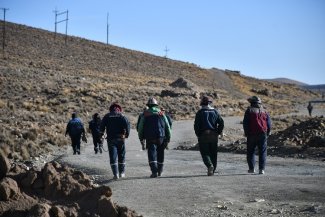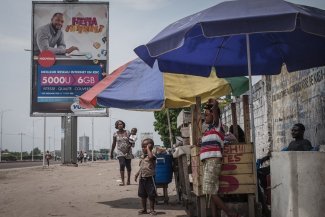Forced labour generates US$150 billion per year of illegal profits in the private economy worldwide, according to a new report released today by the International Labour Organisation (ILO).
This figure is three times higher than previously estimated and is based on a new methodology that takes into account a 2012 ILO study, which found that there are 21 million people in the world who are subjected to forced labour, trafficking and modern slavery. More than half of them (56 per cent) are found in the Asia-Pacific region.
In Profits and Poverty: The Economics of Forced Labour, the ILO claims that two-thirds of the US$150 billion, or US$99 billion, come from sexual exploitation, where women and young girls account for the majority of victims.
The second highest profit-generating activity from forced labour encompasses sectors like construction, manufacturing and mining, where an annual US$31 billion is cashed in.
In agriculture, including forestry and fishing, the profits reach US$9 billion, while US$8 billion is made illegally every year on the back of what domestic workers should actually earn.
“This illustrates that forced labour is not only big business, regrettably, but also that forced labour is changing, it’s mutating” Guy Ryder, Director General of the ILO, told Equal Times.
Enforcing Convention 29
At the end of the month, the annual International Labour Conference (ILC) in Geneva will bring together employers, worker unions and government representatives from all ILO member-states.
The new ILO report will very likely serve as a reference to conclude long-lasting negotiations to update with new standards the 1930 ILO Convention 29 on forced labour, defined as “all work or service which is exacted from any person under the menace of any penalty and for which the said person has not offered himself voluntarily.”
Today, 177 of the 185 ILO member-states have signed it (except, amongst others, the USA and China) making it one of the most ratified and fundamental labour conventions.
But more than 80 years after its adoption, experts believe Convention 29 needs to be reinforced.
They point to the fact that 90 per cent of forced labour today takes place in the private economy while in the first-half of the 20th century it was largely state-sponsored.
Poverty, social exclusion, lack of education, gender and migration are the main drivers of modern-day forced labour says the ILO report, contrary to the colonial-type witnessed in the past.
“There are what we call implementation gaps,” says Ryder. “We need to do more to tackle the new phenomenon of trafficking, the forced cross-border transportation of workers for forced labour purposes. We need to do more on prevention, on compensation, on protection of victims.”
While all the delegates in Geneva seem to agree on the need to fight against forced labour, the legal nature of the new instruments will be subject to intense debates. It is unclear at this stage whether the new standards will be enshrined in a legally-binding protocol, in a set of recommendations or in a combination of both.
Yves Veyrier, spokesperson of the workers at the ILC negotiations on forced labour, believes that “the difficulties start when states are afraid to implement measures that can be costly. Governments overwhelmingly agree that forced labour is wrong, but they are worried at the prospect of more regulations.”
The French union leader of Force ouvrière says that a simple set of recommendations without a protocol would be a “failure for the international community”.
He argues that employers also have an interest in voting in favour of strong state control over companies, in order to avoid being legally exposed in case one of their sub-contractors or business partners happens to be using forced labour.
For Jeroen Beirnaert, a specialist on forced labour at the International Trade Union Confederation (ITUC), the European Union governments will be decisive in winning over a protocol at the ILC, as they usually vote as a bloc but are still divided over the necessity of a new binding instrument.
But even if a protocol is eventually adopted, “it is useless if it is not supported by all the governments and if there isn’t greater international cooperation between states to fight against forced labour” says Beirnaert.
“In the end, it is always the governments that will have to hold businesses to account.”









